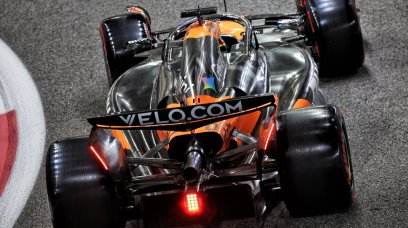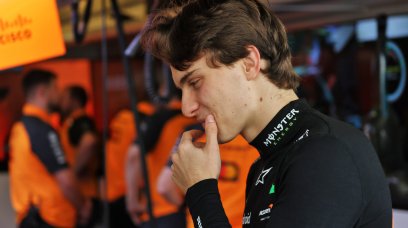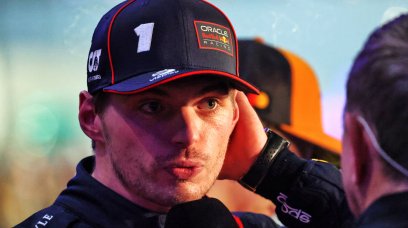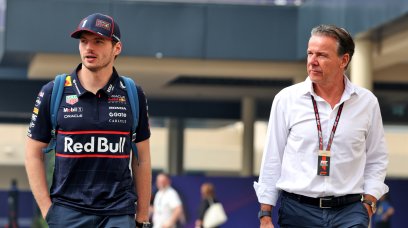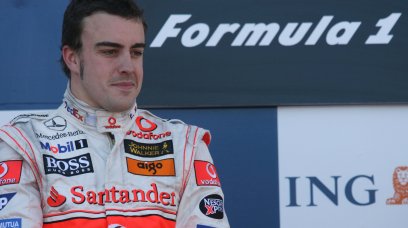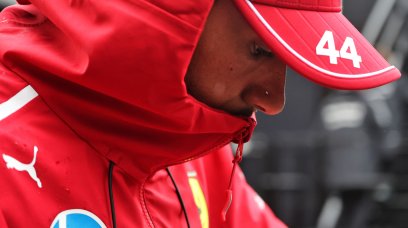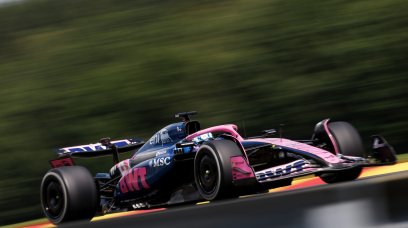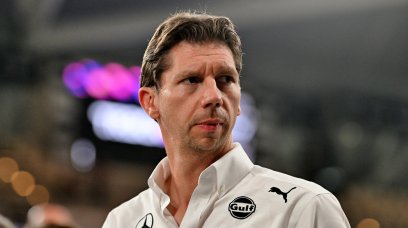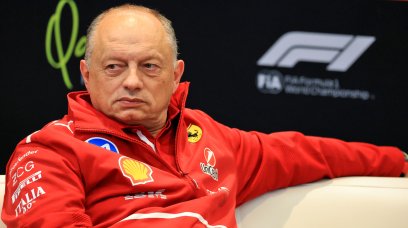Alpine's Chief Technical Officer, Pat Fry, has revealed the reasons why the Enstone-based team have been able to control the 'porpoising' phenomenon that has caught out several of the front-running F1 outfits. With Formula 1 switching from an over-body to a ground effect aerodynamic philosophy for 2022, porpoising has become a common problem for teams as they attempt to figure out how best to control their new machines. Put simply, porpoising refers to the very visible car bouncing that is most evident on the likes of the Ferrari and Mercedes cars. As a car travels at increasing speed down the straight, with the floor lowering to the ground, the amount of space through which the air can pass underneath the car shrinks. As the gap shrinks, the amount of air that can pass through also shrinks. Eventually, there's a point of no return and no more air can physically pass under the car. When this happens, the airflow underneath stalls. As a result, the suction effect is reduced and the car springs back into the air, only to be met with the obvious increased airflow, pulling the car down again. This sets off a cycle of ever-increasing bouncing as the car's speed goes up. While porpoising has had an effect on Mercedes' performance, forcing them to run their W13 with more ground clearance to compensate, Ferrari's F1-75 has been the car to beat in the opening races despite also bouncing its way down the straights.
Alpine's Fry had encountered ground effect before
Alpine have had a reasonably competitive start to the 2022 season, with Fernando Alonso's speed in Australia hinting that the A522 could be capable of joining in the battle for podium positions. Fry, who entered F1 with Benetton in 1987, spoke with RacingNews365.com about the porpoising phenomenon and revealed he had encountered it to a lesser extent before. "In 1987, skirts had been banned on the side of the car," he explained. "But they were on the front wing endplates so we had, to some degree, that side of it (porpoising)." But that little bit of knowledge didn't mean Alpine's design direction took the possibility of bouncing into account. "I think porpoising, and the severity of it, I think it did catch everyone by surprise," he said. "We certainly didn't model that or have those issues in the simulator, but I think, if anything, the way we have designed our car made us a lot less sensitive than others."
What design differences have Alpine made?
Fry went on to explain how Alpine's design differs to other cars on the grid, revealing that the sheer width of the A522 has played out as an advantage due to their ability to stiffen the floor more than teams with a narrow 'coke-bottle' shape. "Well, if you looked at some of the other cars, they were absolutely horrific," he said of the porpoising effect. "Clearly, it's aerodynamically driven. All the people that have gone for a very narrow [coke-bottle] profile, they can't have any floor stays that are very far outboard. "So you have to pull kilos into the floor to stiffen it, and they haven't. So we've got quite a wide coke profile, which makes it easier for us." Fry also revealed that Alpine had targeted having a stiff floor, and are well above the FIA requirements – which will give them scope to pull the stiffness back through measured updates. "We also put a lot of weight in anyway so, on those load-deflection tests for the FIA, which is, I don't know, 20 [millimetres] for a certain load, we are 10 times stiffer than it needs to be!" he explained. "All that extra stiffness then doesn't give you the aerodynamic... as well as the basic aero characteristic, you've got all of this flexing and I'm sure, to some degree, that's what caught a lot of the other teams out." With some very late changes to the 2022 regulations allowing teams to run floor 'stays', ie. rods or cables with one permitted on each side of the car, Fry said that this had helped some to escape the worst of the porpoising phenomenon. "We certainly had the problem; we can induce the problem, we know how to stop it," he commented. "We've all just got to deal with it. It's kind of a let-off for everyone, having that stay added to it, but that's the way it is."
Alpine were "lucky" in how they designed their car
In a refreshingly honest admission, Fry went on to state that the seemingly more clever initial design of the Alpine A522, which reduced the potential for porpoising, had come about as a fortunate side-effect of their chosen path. "We were chasing floor stiffness, because the stiffer you make the floor, the lower you can run the car," he revealed. "We know where it [porpoising] happens. It wasn't any clever design to try and avoid it in pre-thinking – not at all! We were just lucky with our layout. We've got a better understanding of it now." Alpine have scored 22 points so far this season to sit fifth in the Constructors' Championship.
Most read
